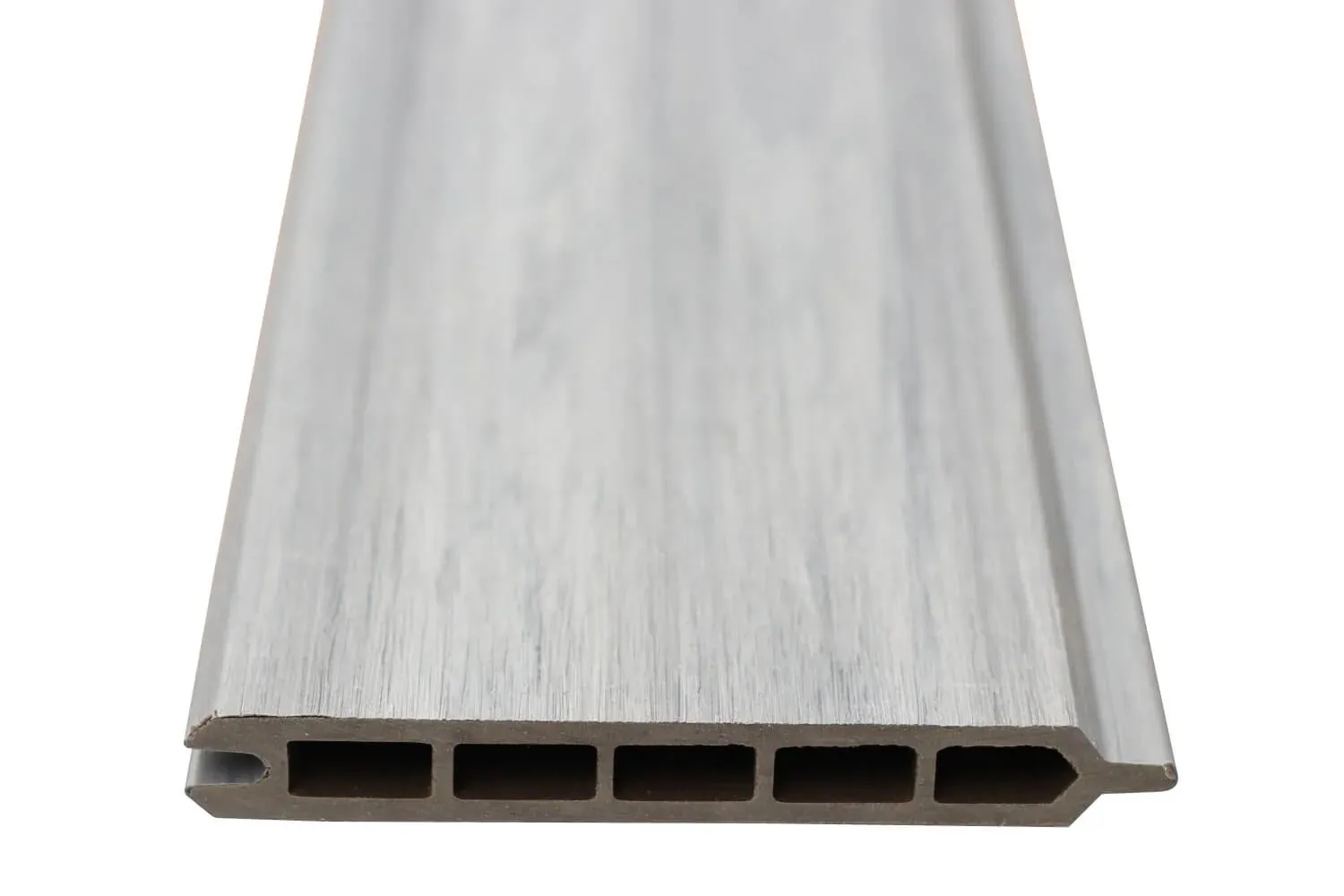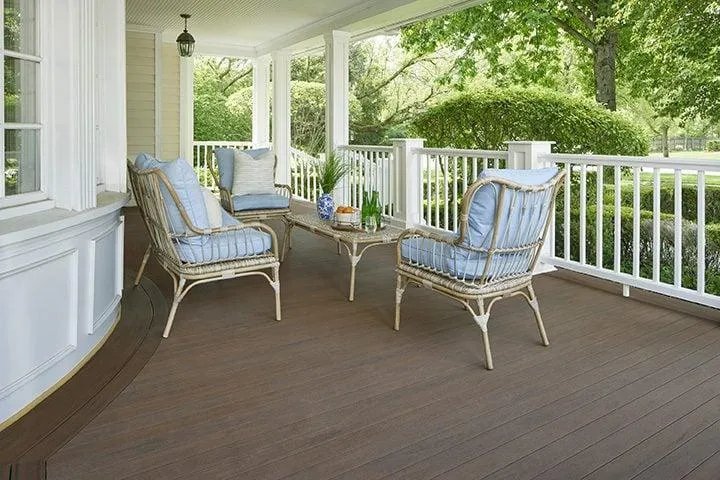When it comes to decking, not all boards are created equal. If you’re aiming for a sleek, seamless surface that looks polished and modern, you may want to consider tongue and groove composite decking. But what exactly is it, and is it the right fit for your outdoor space? In this blog, we’ll break down the basics, compare it to regular composite decking, and offer tips on choosing, installing, and maintaining this increasingly popular material.
What Is Tongue and Groove Composite Decking?
Tongue and groove composite decking refers to boards that interlock using a tongue (a protruding edge) and groove (a matching slot) system. This method creates a snug fit between boards, producing a smooth, gap-free surface. Unlike traditional deck boards that require spacing between each plank, tongue and groove boards create a more polished appearance.
What makes it composite? These boards are made from a blend of recycled wood fibers and plastic materials, combining the natural look of wood with the durability and low maintenance of synthetic components.

Benefits of Tongue and Groove Composite Decking
Let’s take a look at why homeowners love this product:
- Gap-Free Surface: No spacing between boards means less chance for debris buildup or insect nesting.
- Clean Aesthetic: The interlocking design creates a smooth, modern look—almost like indoor hardwood.
- Quick Installation: Boards click together easily, speeding up the building process.
- No Visible Fasteners: Hidden installation systems give your deck a sleek, uncluttered appearance.
- Low Maintenance: No staining, sealing, or sanding required.
Where to Use Tongue and Groove Composite Decking
Not all outdoor spaces are created equal, and neither are all deck boards. Tongue and groove composite decking is especially suited for:
- Covered porches and screened-in patios: Its seamless surface keeps out debris and bugs—perfect for sheltered spaces.
- Three-season rooms or sunrooms: If you want the look of indoor flooring outdoors, this option gives you the smooth finish you need.
- Pool decks and hot tub surrounds: When installed properly with drainage solutions, tongue and groove boards can work well around water features due to their water resistance.
However, these boards aren’t typically recommended for open decks exposed to a lot of rainfall without proper drainage, as their interlocking design doesn’t allow water to flow easily between the gaps.
Tongue and Groove vs. Traditional Composite Decking
Here’s a quick comparison between tongue and groove composite decking and traditional composite decking:
| Feature | Tongue and Groove Composite Decking | Traditional Composite Decking |
| Board Connection | Interlocking tongue and groove | Fastened with spacing |
| Surface Finish | Seamless, gap-free | Visible gaps between boards |
| Water Drainage | Limited drainage | Excellent drainage |
| Installation Complexity | Easier (interlocking system) | Slightly more complex |
| Best Use Case | Covered/indoor-like outdoor spaces | Open-air decks and patios |
| Look | Sleek, modern, interior-like | Classic, rustic, deck-like |
Each has its place, so the right choice depends on your location, climate, and how you want to use your outdoor space.
How to Choose the Right Tongue and Groove Composite Decking
Not all products are created equal, so here’s what to consider when shopping for tongue and groove composite boards:
1. Board Composition
Choose a reputable brand that uses high-quality recycled materials with added UV inhibitors and moisture barriers. Higher-end boards may include co-extruded layers for added protection.
2. Color and Texture
Look for boards that mimic natural wood tones and grain patterns. Modern composite options now offer everything from light cedar to deep espresso finishes.
3. Thickness and Width
Ensure the boards are thick enough to handle your desired weight and wide enough to minimize installation time.
4. Warranty
Look for products that offer at least a 25-year warranty on fade, stain, and structural integrity.
5. Brand Reputation
Brands like Trex, TimberTech, and Fiberon offer reliable tongue and groove options backed by years of performance and customer support.
How to Maintain Tongue and Groove Composite Decking
Although composite decking is low maintenance, it’s not zero maintenance. Here are some simple ways to keep your boards looking brand new:
- Regular Cleaning: Use a soft-bristle broom to remove dirt and debris. Wash with mild soap and water or a composite-specific cleaner.
- Avoid Harsh Chemicals: Skip bleach and oil-based cleaners that can degrade the surface.
- Prevent Mold and Mildew: Keep shaded areas dry and clean, especially if your deck is in a humid or damp climate.
- Use Furniture Pads: Place pads under heavy furniture to avoid scratching or denting the boards.
- Check for Damage: While rare, composite boards can crack or chip under heavy impact—inspect regularly and replace any damaged planks.
Tips for Better Deck Performance
- Install with a Slope: Even on covered porches, consider installing with a slight pitch for water runoff.
- Pair with Hidden Fasteners: These systems work beautifully with tongue and groove boards and keep your deck looking seamless.
- Don’t Skip Ventilation: Even enclosed decks need airflow underneath to prevent moisture buildup.
- Use Compatible Trims: Match your deck edges with fascia and corner trims for a finished, high-end appearance.
Conclusion
Tongue and groove composite decking is a beautiful and practical solution for homeowners looking to blur the lines between indoor comfort and outdoor living. With easy installation, a seamless finish, and low upkeep, it’s no wonder more people are turning to this style of decking—especially for covered or partially sheltered outdoor spaces.
Whether you’re designing a cozy sunroom, a stylish front porch, or a peaceful poolside retreat, choosing the right decking materials will make all the difference. If you want to know more about composite decking, you can also read this full guide: Everything You Need to Know About Composite Decking
Looking for more guidance on choosing the best composite materials for your outdoor spaces? Visit ecobuildhome.com for expert tips, detailed buying guides, and honest comparisons of sustainable building products. Whether you’re a DIYer or working with a contractor, we’ve got everything you need to get your project off the ground.


